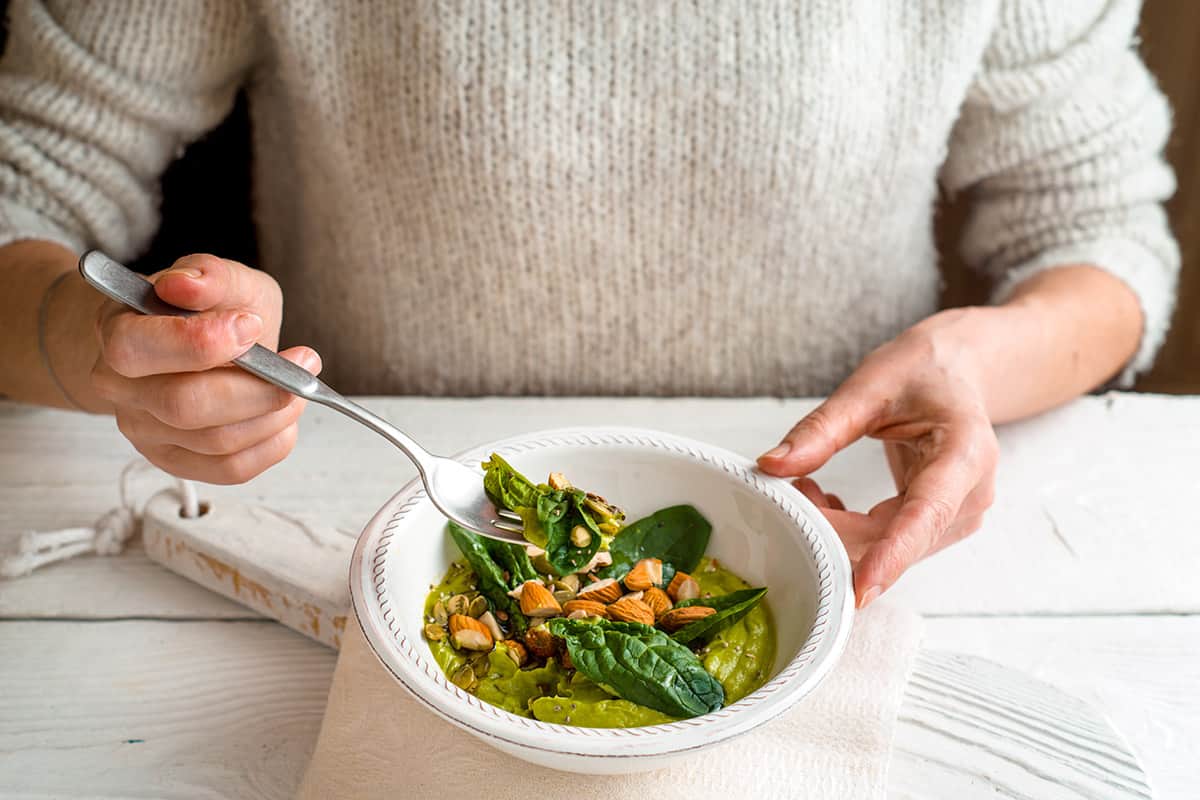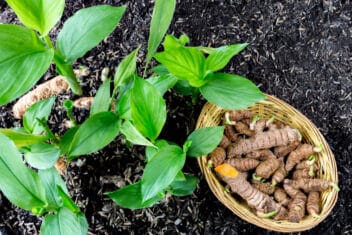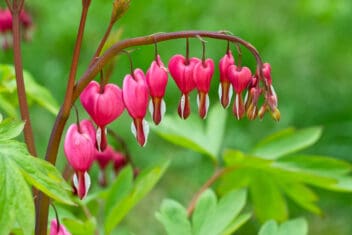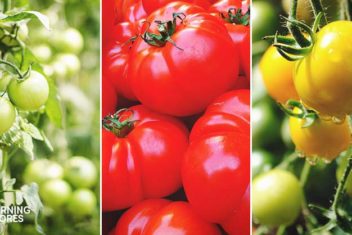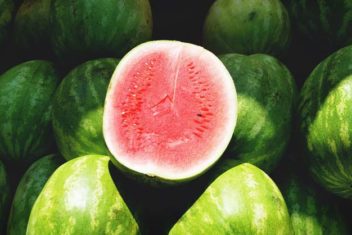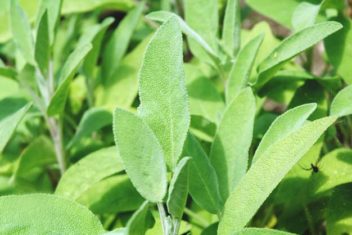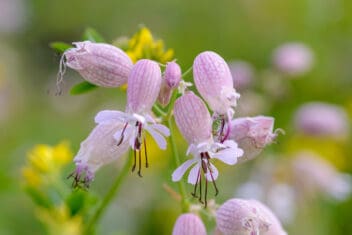Those of us who are keen on self-sufficiency know the importance of nutrient density. Numerous vitamins and minerals are essential for overall health and wellbeing.
Quite simply, unless you want to raise a bunch of cows or goats for dairy, you’ll have to find alternative means of getting enough calcium into your diet.
So, let’s take a look at some plants that have the most calcium and that you can grow in your garden.
The Best Calcium-Rich Plants
Many people don’t realize just how much calcium (Ca) is found in various plants. Better still, they might not be aware that almost all of these are incredibly easy to grow in many climates.
Read on to discover 40 plant-based calcium sources you can grow on your own homestead.
1. Spinach
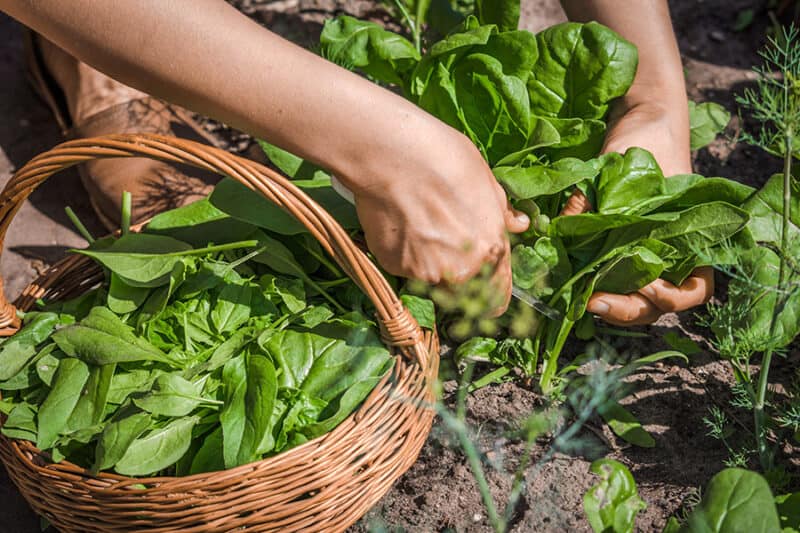
Spinach is one of the tastiest leafy greens out there and just happens to be rather packed with calcium. It has approximately 99 mg of calcium per 100 g serving! That said, it also has a fair bit of oxalic acid in it.
Oxalates can prevent your body from absorbing calcium. Furthermore, too much exposure to them can cause long-term kidney issues. Enjoy spinach as a tasty calcium source, but be sure to mix it up with other greens and such regularly.
2. Kale

This tasty brassica has even more calcium than spinach, with 150 mg per 100 g. This applies to pretty much all kale varieties, too. Whether you like tender Red Russian or textured Lacinato, you can rest assured that you’re rebuilding healthy teeth and bones with every bite.
3. Collards
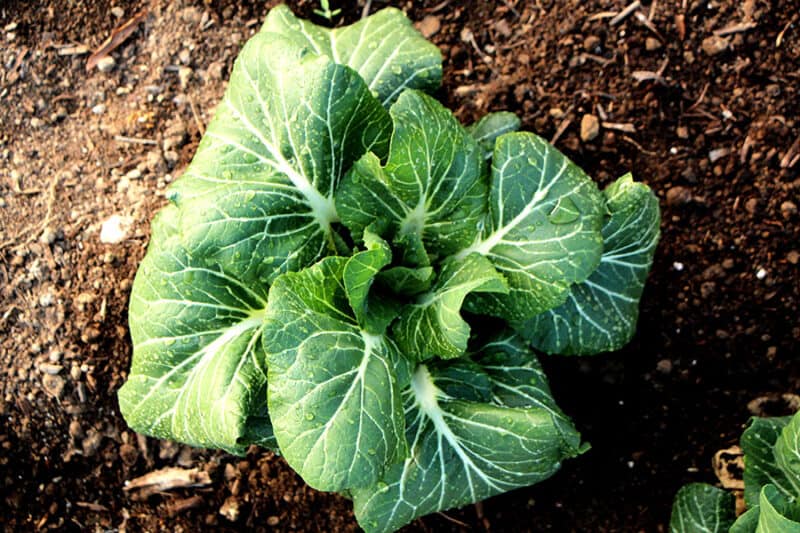
If you’re looking into growing plants that have the most calcium, you need to add collards to your list. They offer a startling 232 mg of calcium per 100 g serving, along with tons of iron, magnesium, vitamins A, C, and K, and several B vitamins too.
These powerhouse greens can be slow-braised to make them tender, or used to make raw wraps.
4. Broccoli
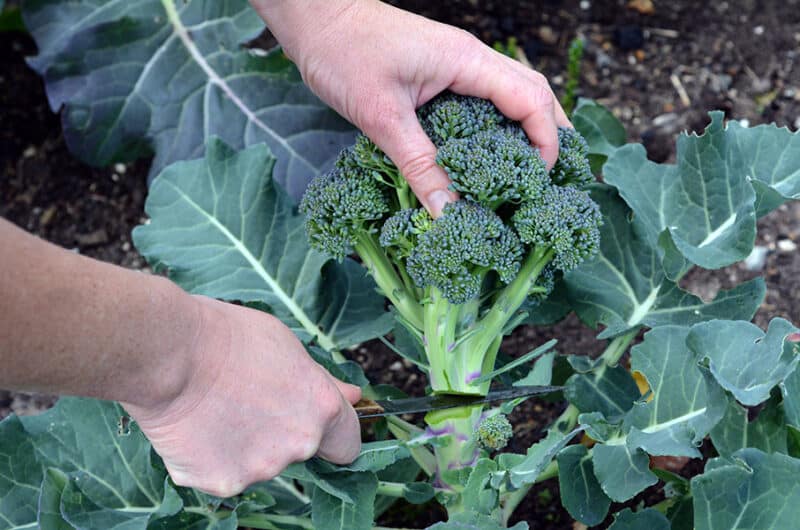
You likely either love or hate this brassica. Whichever side of the fence you’re on, you can at least appreciate that it has 62 mg of calcium per 100 g. It’s great cooked or raw (dip it in hummus for extra iron!), or as an ingredient in your favorite soup.
5. Rapini (Brassica rabe)
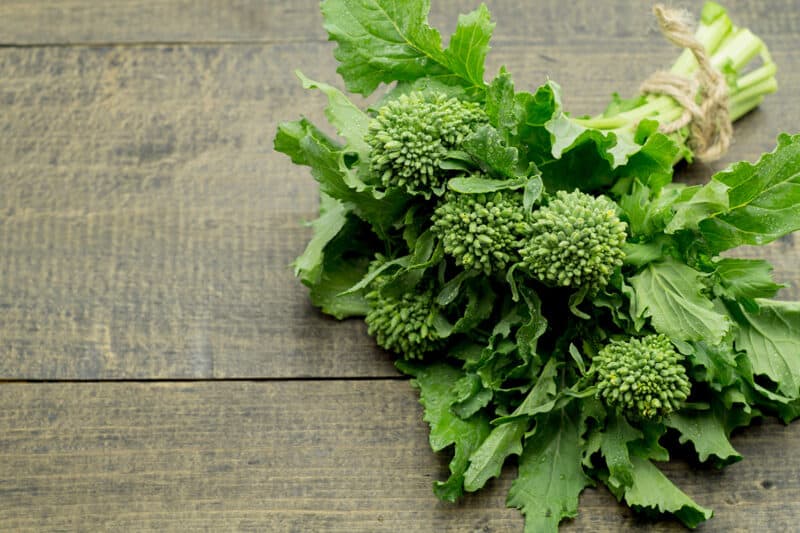
If you are, in fact, a broccoli fan, you’ll probably enjoy rapini (broccoli rabe) as well. It’s common in Mediterranean and Asian dishes alike and has 108 mg of calcium per 100 g. It’s great steamed or braised, with garlic or hoisin.
6. Bok Choy
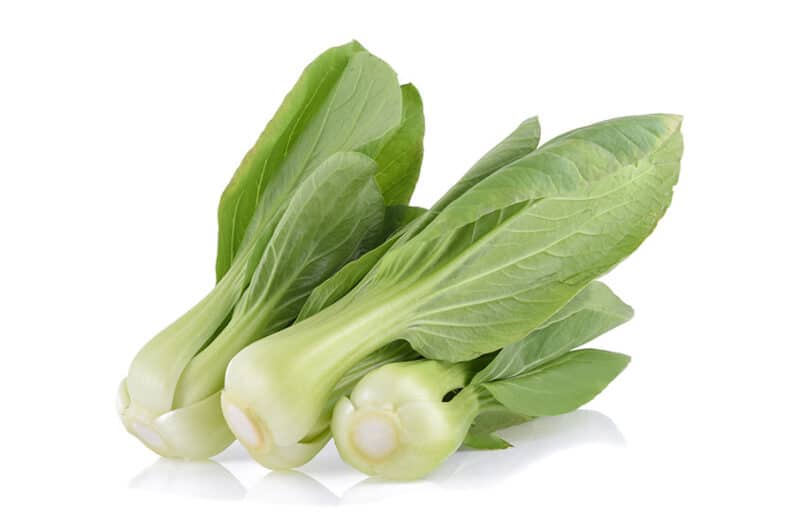
Aren’t these crunchy little mini cabbages adorable? Like other members of the brassica family, they’re also great sources of plant-based calcium. They have about 105 mg of calcium per 100 g serving.
7. Brussels Sprouts

Although these cabbage cousins have a bit less calcium in them than those listed above (42 mg per 100 g), their Ca content matches their tastiness quite spectacularly. Try roasting them or pan-frying them with garlic and olive oil for ultimate deliciousness.
8. Kohlrabi
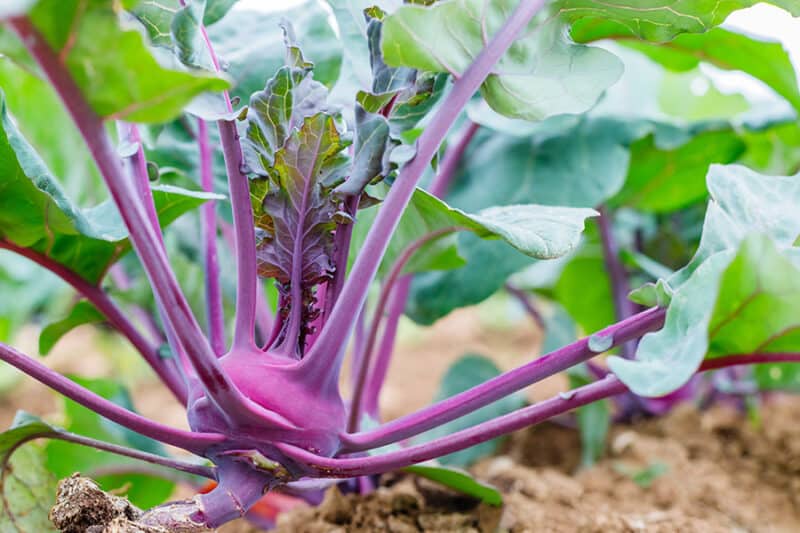
Okay, so kohlrabi only has 24 mg of calcium per 100 g, but they’re just too cool not to add to this list. I mean, just look at them. They’re seriously tasty too, whether cooked or shaved into salads.
They might not top the list of plants that have the most calcium, but they’re versatile, fascinating vegetables that can thrive in some pretty harsh conditions. If you’re in zones 3-6, definitely add these to your gardening list this year.
9. Mustard Greens
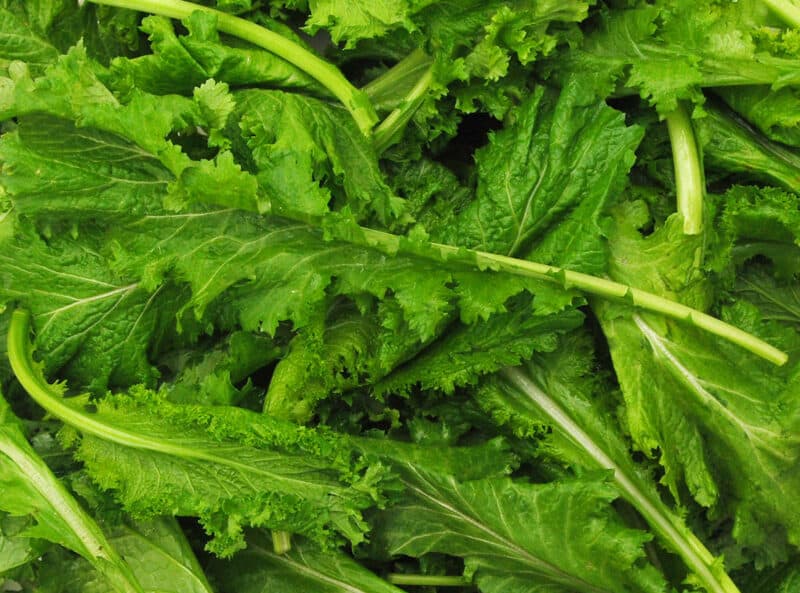
Mustard greens are usually grown as a trap crop, but if you like some spiciness in your leafy greens, consider growing them as plant calcium sources as well. They have about 115 mg of Ca per 100 g, and add a fiery bite to any dish they’re added to.
10. Arugula
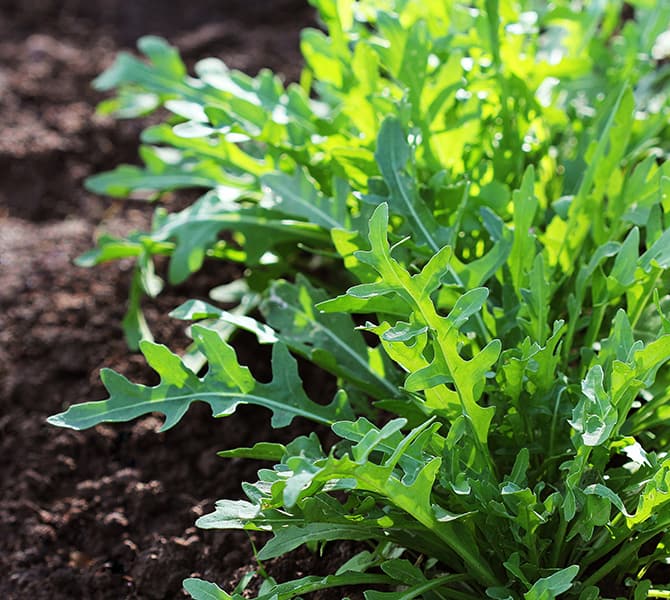
Most people don’t realize that arugula is also a member of the brassica family, but it is! As you can imagine, this also makes it quite high in the calcium department. In fact, it has some of the highest calcium concentrations of all its cousins: a whopping 160 mg of Ca per 100 g serving.
11. Swiss Chard
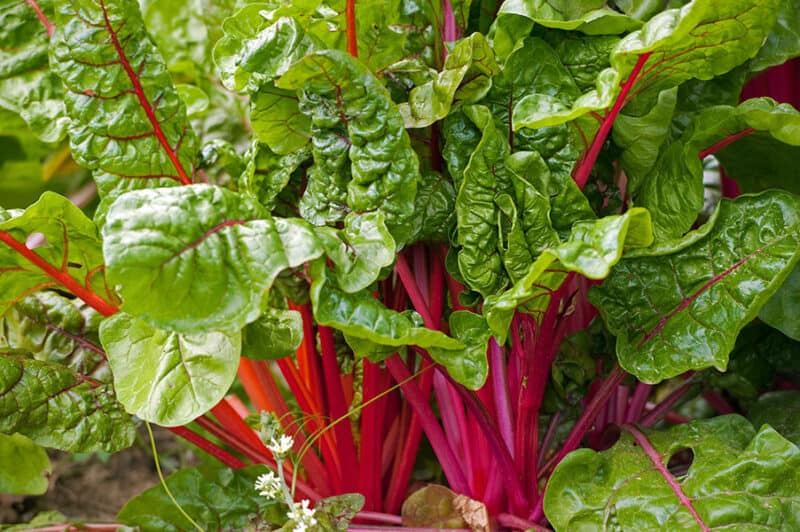
If you’re a fan of leafy greens, but you prefer their flavor to be on the gentler side, then be sure to grow plenty of Swiss chard. This green vegetable is also known as “silverbeet” (especially in Australia), and it offers up about 52 mg of calcium per 100 g.
It’s one of the most delicious greens out there, and is absolutely magnificent in spanakopita, as well as added to stir-fries, soups, and braised dishes.
12. Stinging Nettles
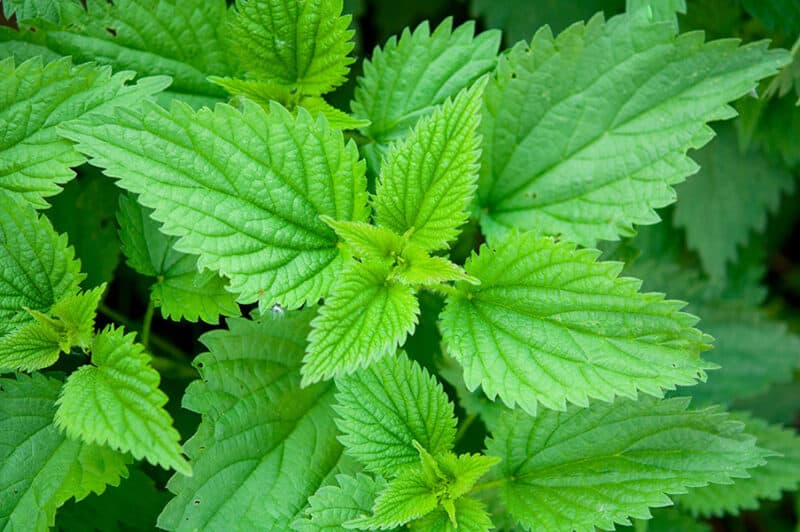
These are a bit more difficult to harvest than the other greens on this list, but they’re well worth the effort. Are you ready to be blown away? 100 g of stinging nettles contains 481 mg of calcium.
Yeah, you read that correctly.
Get some thick gloves and sturdy clothing, and go harvest several baskets’ worth of these prickly jerks next spring. Then transform them into soup, spanakopita, tea, and even nettle cake. Your body will thank you.
(Side note: beyond calcium, these plants are also packed with iron and microproteins, which are more easily assimilated by women’s bodies than men’s.)
13. Dandelions
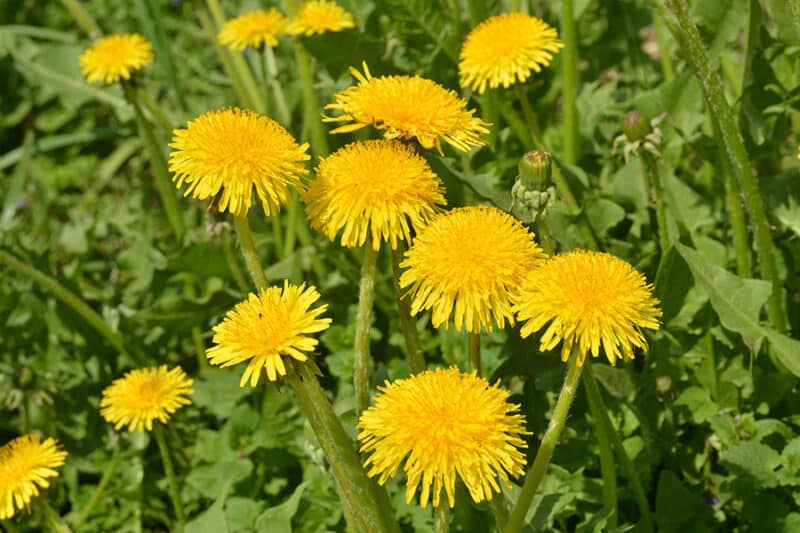
If you like bitter greens, consider a trip to your lawn the next time you’re looking for calcium-rich ingredients. Dandelions contain 187 mg per 100 g serving and are certainly abundant just about everywhere.
14. Parsley
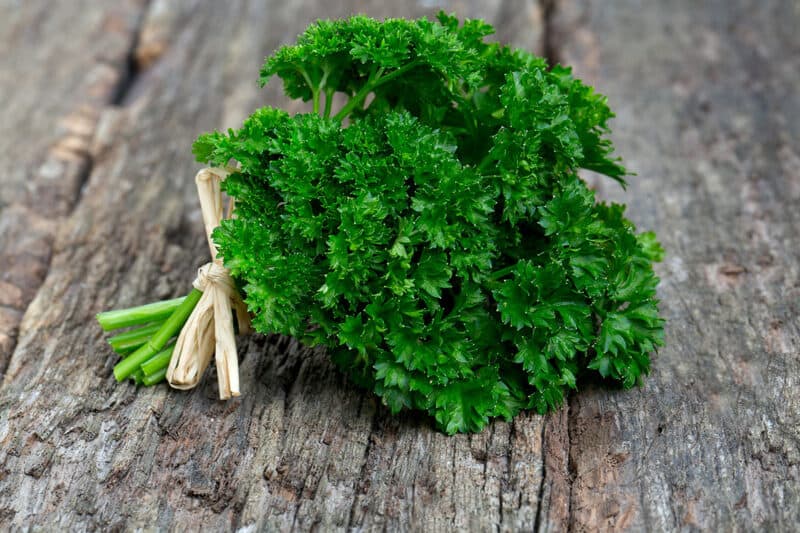
When people start researching different plants that have the most calcium, they rarely think of herbs. Vegetables and roots are high on their research list, but simple seasoning ingredients? Nah.
Fortunately, parsley is anything but simple, and contains almost 140 mg of Ca in every 100 g serving. You might only use parsley as a flavoring agent or garnish, but it’s actually quite good as a lead ingredient. For example, it’s amazing in tabbouleh and various other salads.
Just be careful about eating too much parsley if you’re pregnant, as this herb has abortifacient properties.
15. Watercress
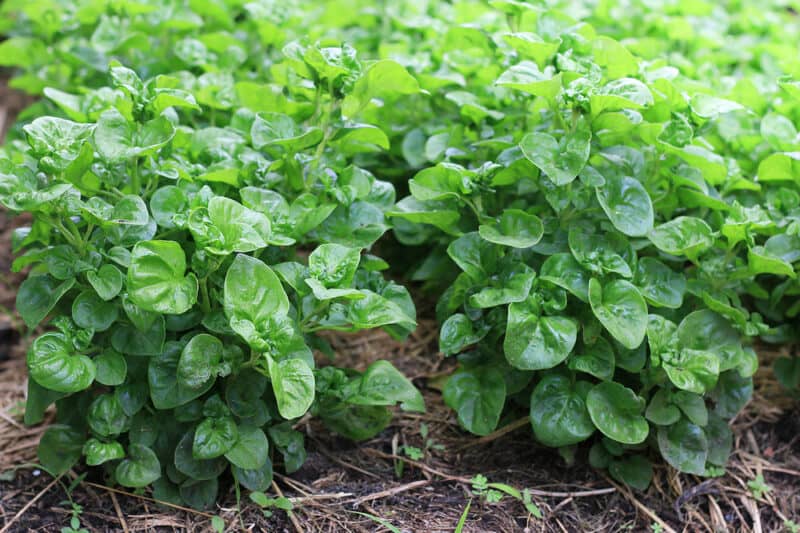
Are you a fan of peppery greens? And do you have a low-lying, damp spot in your yard? Then be sure to add watercress to your growing list this year. This plant has a startling 120 mg of calcium in every 100 g serving, and is fabulous in salads, sandwiches, and soups.
Try tossing a handful of watercress into your next bowl of ramen or pho. It’ll add a ton of calcium to it, as well as iron, vitamin C, and overall deliciousness.
16. Purslane
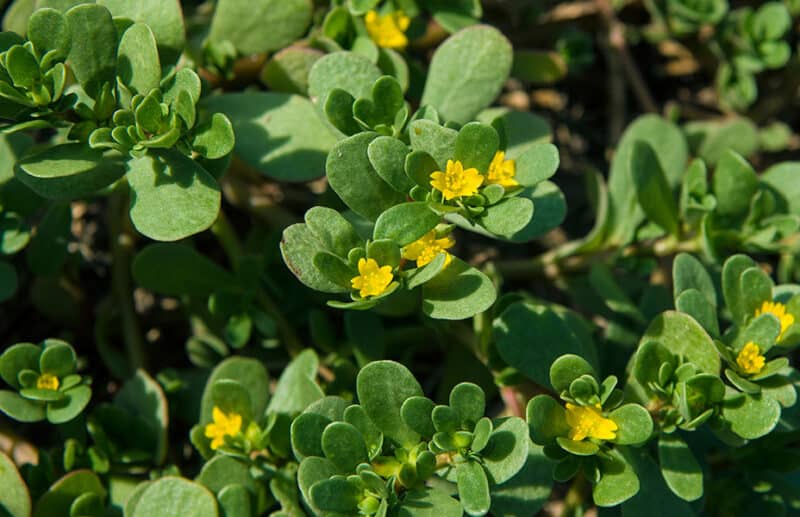
Although purslane’s 65 mg per serving is a lower calcium dose than some others on this list, it’s still significant. In fact, it’s even more impressive considering how this low-lying perennial green can survive in almost any climate.
Consider growing it as groundcover instead of a lawn as part of your edible garden plans.
17. Celeriac
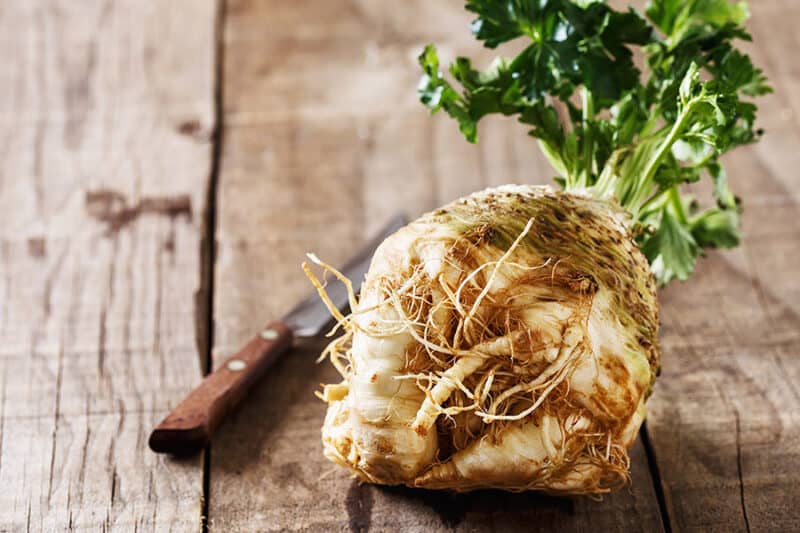
This gnarly root vegetable isn’t exactly pretty, but what it lacks in aesthetic qualities, it makes up for in nutrition. Although it only has 43 mg per 100 g,
celeriac’s main benefit in calcium-land is that it’s rich in vitamin K. If you’re not already aware of this, K is essential for calcium absorption.
A single serving of celeriac root can provide 51% of your daily vitamin K intake!
Try using it as a lead ingredient alongside some of the other, more calcium-rich items on this list. It’s great shaven into remoulade (kind of like coleslaw), or cooked and pureed into a rich, creamy soup with spinach or other dark, leafy greens.
18. Fennel
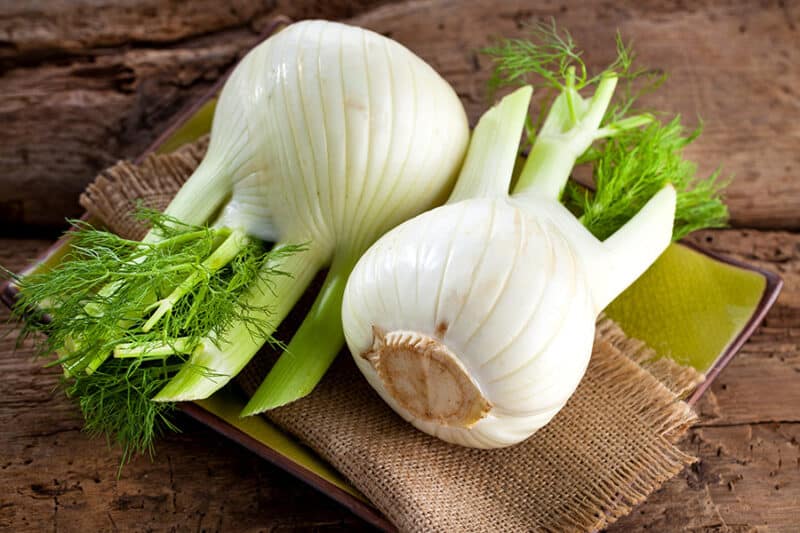
Do you like the taste of anise/licorice? If so, be sure to get plenty of fennel into your diet. This crunchy bulb has almost 50 mg of Ca in 100 g, and can be eaten raw or cooked.
I love it julienned and mixed with chopped apples and walnuts with a honey-dijon vinaigrette. Other people like to bake it in butter and/or cheese, with root vegetables and onions. Get creative!
19. Okra
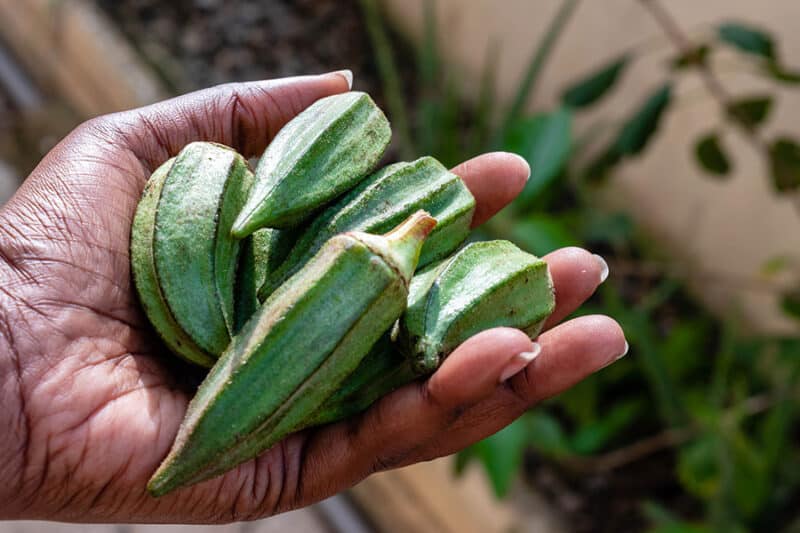
Okra is one of those vegetables that people either love or hate. Some adore its texture in dishes like gumbo, others gag at its inherent sliminess. If you can get over this plant’s texture and learn to love it, you’ll likely be very fond of its 82 g of calcium in 100 g serving.
Here’s a cooking tip that a Guyanese ex of mine shared with me: slice up your okra and spread out the slices to dry for several hours before cooking it. For example, cut the slices in the morning if you’re planning to fry it up for supper. Then dredge the slices in a cornmeal mixture, and cook in very hot oil.
This will reduce the sliminess exponentially so you can just enjoy the flavor.
20. Artichokes

These glorious globes have about 46mg of calcium per 100 g serving. Now, if you consider that one artichoke globe weighs approximately 120 g, you can get an idea of just how much Ca you’ll get by eating a couple of them.
Granted, we don’t eat artichoke globes whole, but rather enjoy their luscious hearts. You can also scrape off the flesh from each leaf’s base after cooking it, and either eat it as is, or use it in soup.
22. Beets (for their Greens)
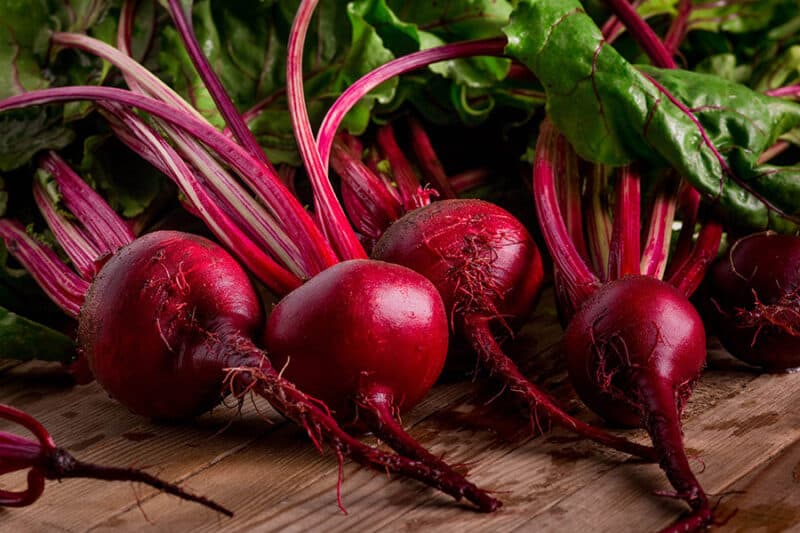
When most people think about beets, they usually only envision the deep reddish-pink roots that stain everything around them when chopped. After all, those are readily available at supermarkets everywhere.
If you grow your own beets, however, or buy them at farmer’s markets, make sure to keep their greens intact. These luscious leaves have 117 mg of calcium per 100 mg! Be sure to add them into that borscht you’re making, or braise them like you would collards or kale.
21. Cardoons
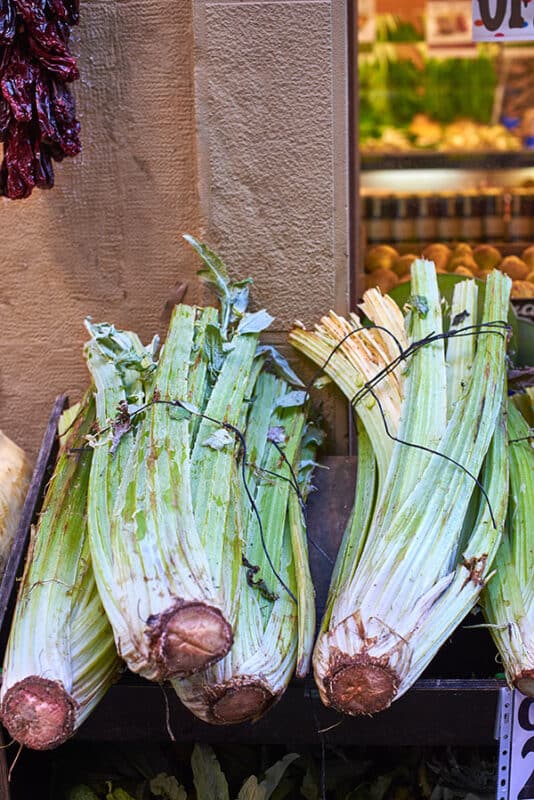
Although cardoons and artichokes are related, the former have significantly more calcium than their cousins do. The average cardoon has about 70 mg of Ca in 100 g compared to artichokes’ 49 mg.
That said, cardoons are also more difficult to cultivate unless you’re in a very hot, dry climate. If you are, however, then be sure to grow plenty of them!
23. Turnips (for their Greens)
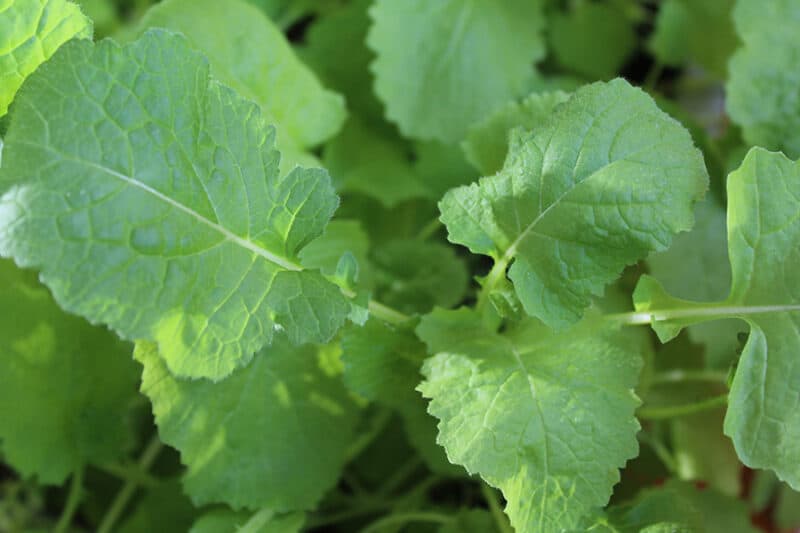
While turnips themselves are bland-yet-nourishing root vegetables, their green leaves really are the stars of the show. They’re flavorful and peppery, and contain around 137 mg of calcium per 100 g serving.
24. Radishes (for Greens)
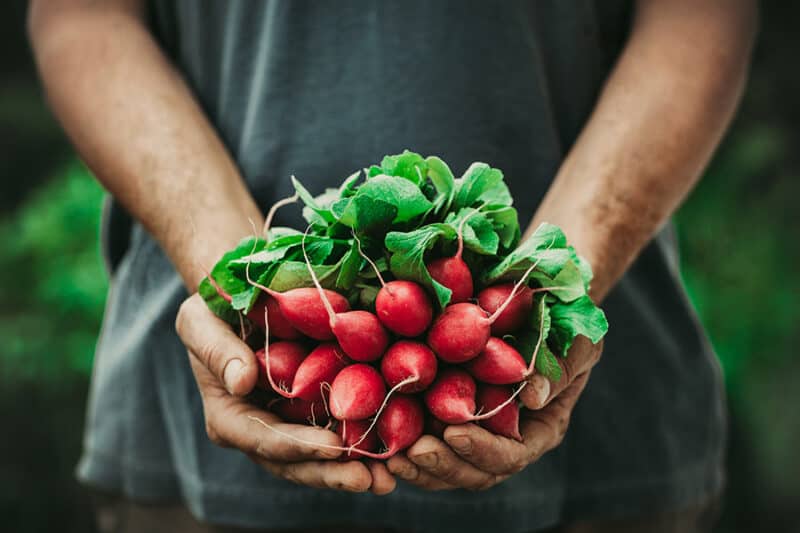
Okay, you might want to sit down and prep for this one.
While spicy little radish roots are prized as salad garnishes, or cut thinly onto toast, most people just toss the greens away. They might not if they realized just how much calcium is in these thick, meaty greens.
Are you ready for this?
A 100 g serving of radish greens contains over 750 mg of calcium. That’s the equivalent of nearly three cups of cow’s milk. Only in leaves.
25. Green Beans
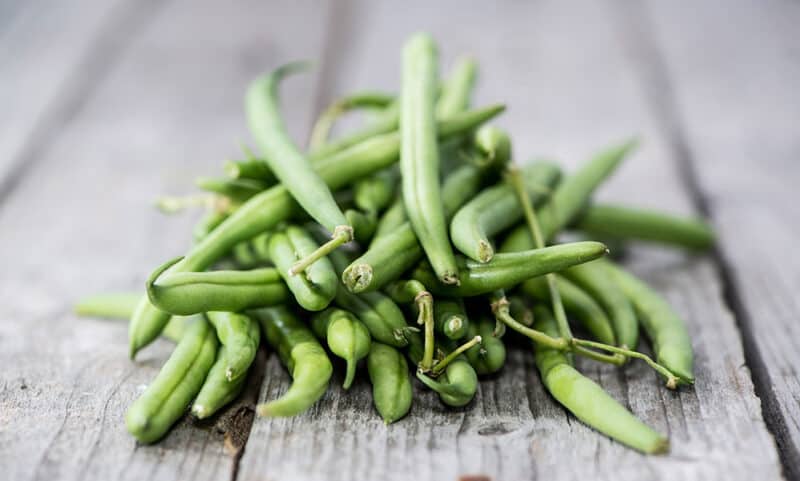
Those juicy green pods that you can steam into haricots verts, or bake into a horrifying casserole, have a generous 37 mg of calcium per 100g. When you find a variety that you really like, be sure to grow about three times as many as you’ll use in a season.
This way, you can freeze, dry, or pickle them for wintertime, plus have extras available for the animals that will inevitably eat their fill as well.
26. Beans and Peas
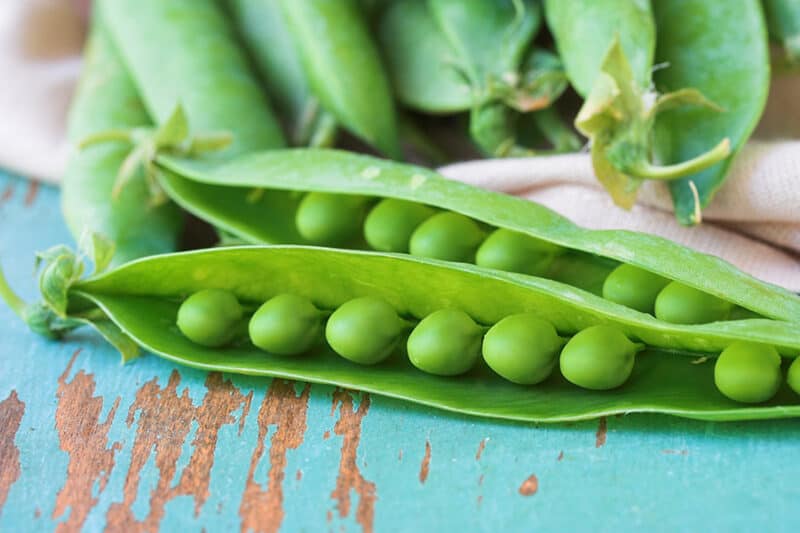
Beans and peas aren’t just essential sources of plant-based protein: they also have significant calcium content. Pinto and soybeans have the most, with 115 mg and 277 mg per 100g, respectively.
Green peas have an average of 59mg of calcium per 100g. Like green beans, be sure to grow way more than you’ll need over the course of the season. Definitely set aside a good portion of them to dry as snacks, because they’re amazing.
27. Lentils
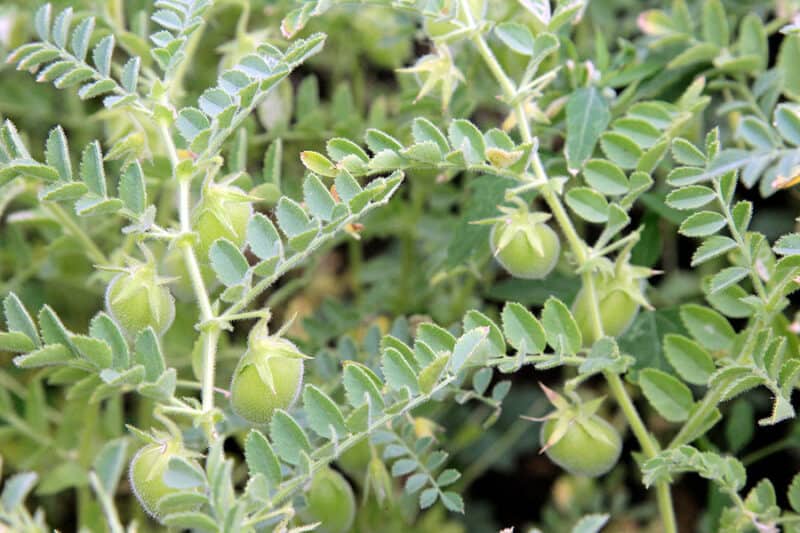
These pulses are also calcium rich, with approximately 56mg per 100g. They’re also remarkably versatile! You can toss them into salads, enjoy them in soups and daal, and use them as fillings for various loaves.
Check out Yogam Ottolenghi’s recipe for puy lentil and aubergine stew if you’re stuck for ideas.
28. Bean Sprouts
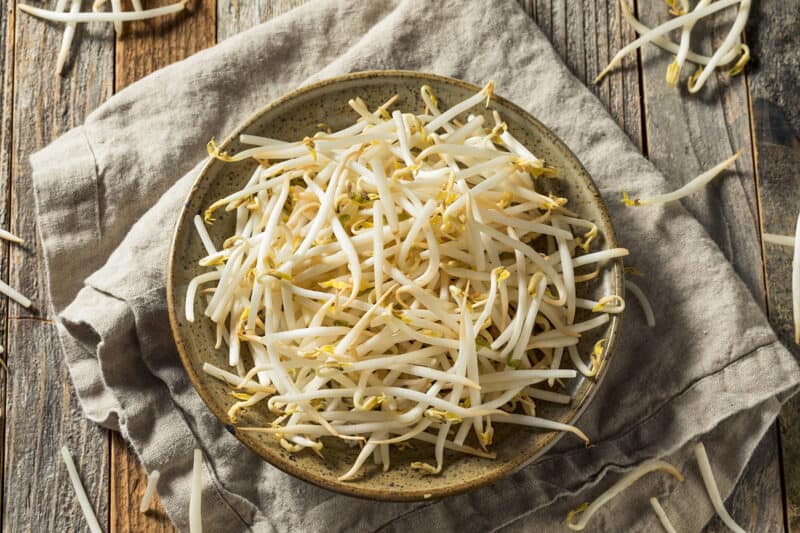
You know those delightfully crunchy bean sprouts that you use in dishes like padh thai? Those just happen to have around 50mg of calcium per 100g serving.
I bet you didn’t know that these oft-overlooked toppings are among the plants that have the most calcium! They’re delicious both raw and cooked, and you can sprout them on your countertop for easy, nutritious harvests.
29. Squash
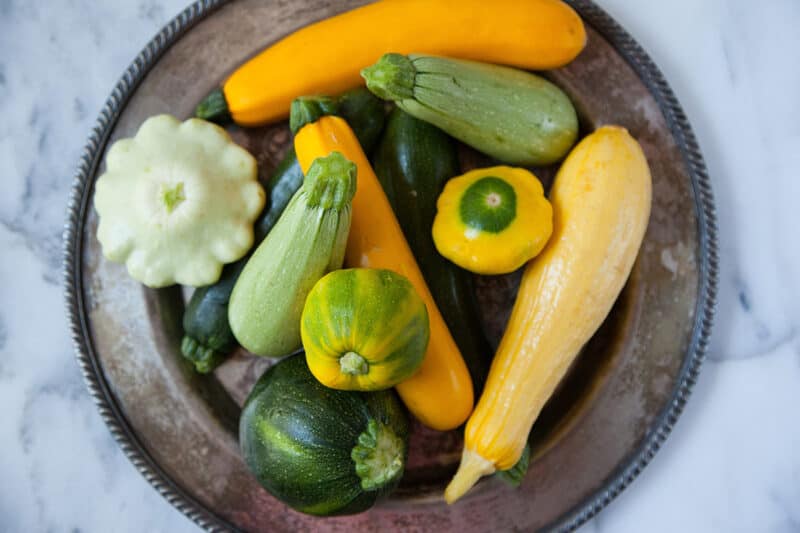
The average squash has 18 to 25 mg of calcium per 100 g cooked, depending on the species. Summer squashes like zucchini and pattypan squashes have lower amounts. In contrast, thick-skinned winter squashes such as butternut and acorn have more calcium.
30. Pumpkin
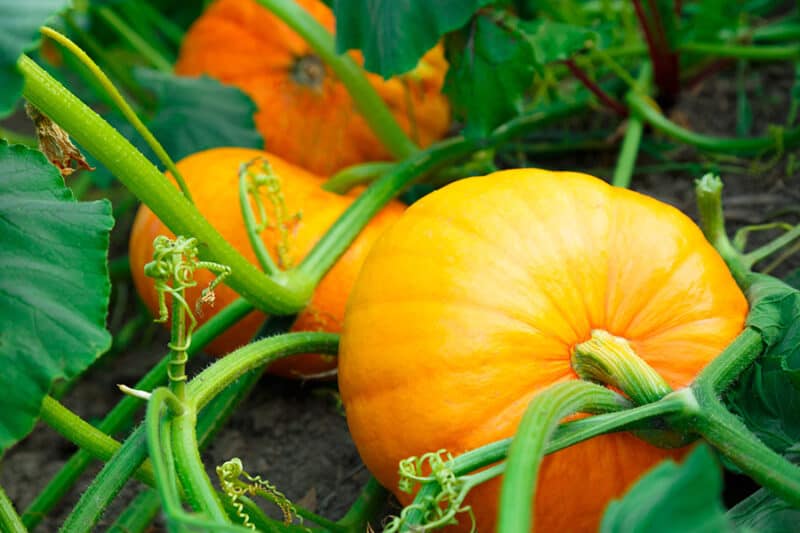
Now, pumpkins are superstars in the dual harvest category. Their flesh contains an average of around 23 mg of calcium in 100 g. That said, their seeds are calcium powerhouses. These pepitas have approximately 78 mg of calcium per 100 g!
If you’re looking for plants to grow that offer different types of nutrition from various plant parts, be sure to add pumpkins to your list.
31. Sweet Potatoes
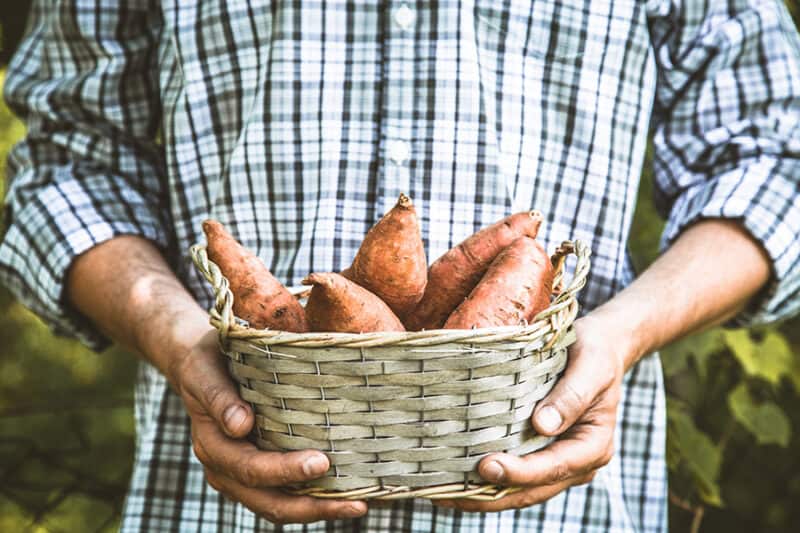
Do you have a sweet tooth that matches your love of nutrient density? Then definitely grow a sweet potato patch (or four)! The tasty tubers offer around 30 mg of calcium per 100 g serving, and their greens have nearly 40 g per the same amount.
If you bake a couple of sweet potatoes and top them with garlicky braised greens, you’ll get all your recommended daily calcium in a single meal.
32. Leeks
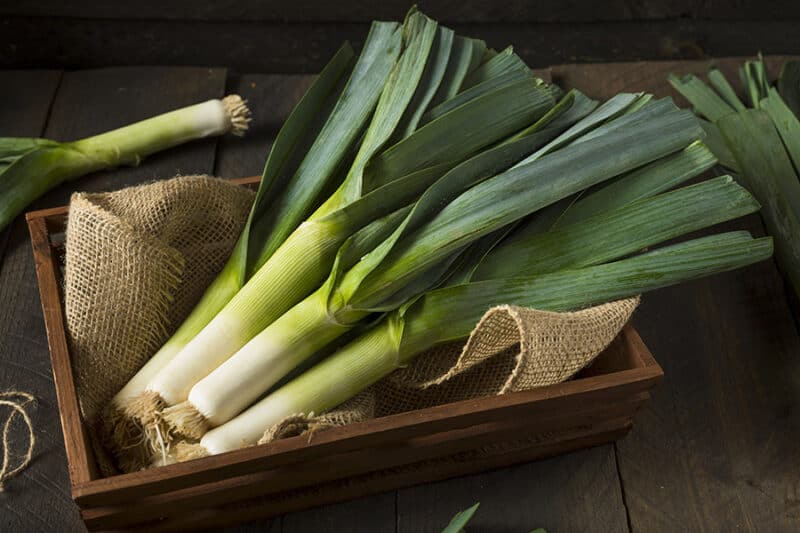
Surprisingly, 100 g of leeks (which amounts to a little more than half a cup, chopped), contains around 60 mg of calcium. It’s not only the white and palest green parts that are edible, either.
The pale bits add a lovely, mild onion flavor to soups and baked dishes, but the darker green ends can be fried up in oil as a topping for fish or burgers.
33. Spring Onions (Scallions)
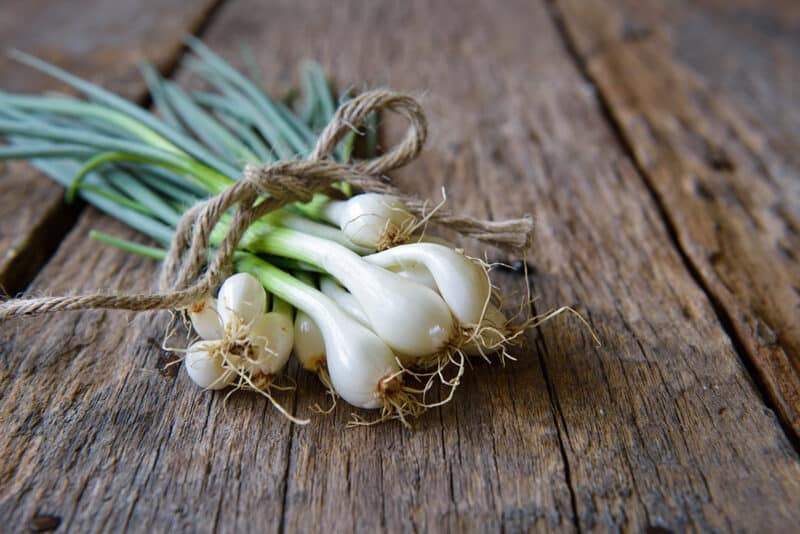
These look like smaller versions of their leek cousins and pack even more calcium into every serving. You’re looking at over 70mg in 100g. This makes those spring onion pancakes you can get at dim sum even more appealing.
Use them raw or cooked, and remember that you can re-grow them from scraps!
34. Mulberries
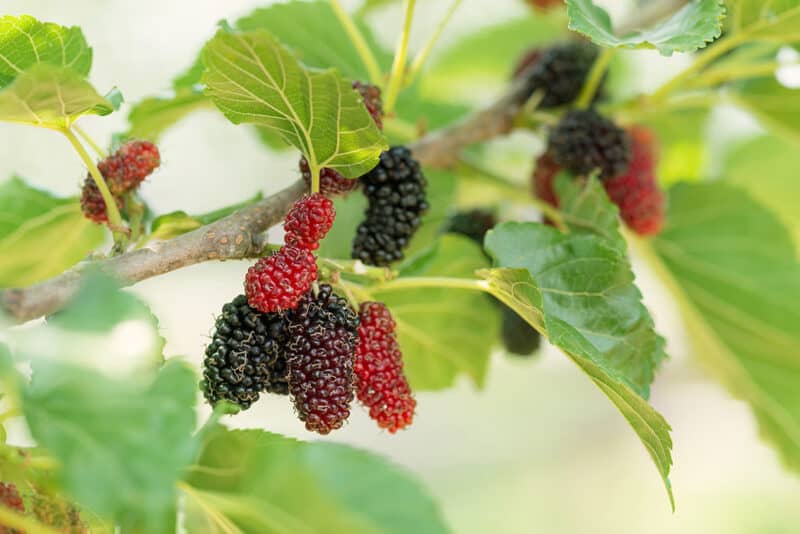
A half-cup (100 g) serving of mulberries will give you approximately 39 mg of calcium. You’ll also get a ridiculous amount of antioxidants, as well as iron, vitamin C, and potassium.
As far as berries go, these are some of the most nutrient-dense species you can grow. Consider edging your property with mulberry trees, if possible, and turn the lower areas into symbiotic fruit guilds with other plants that are high in calcium.
For example, plant scallions or leeks around the trees’ drip lines, with fennel and arugula within the perimeter. Add some flowering herbs to encourage pollinators, and you’re golden.
35. Gooseberries
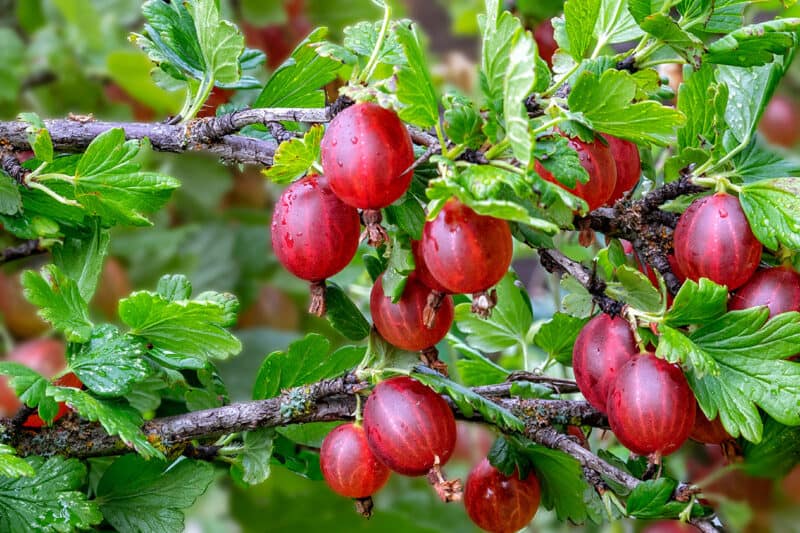
Now, gooseberries have an impressive amount of calcium per serving. They offer a little over 25 mg per 100 g. That said, they also have high concentrations of calcium oxalate. This means that while these berries are tasty and good for you in small quantities, they can damage your kidneys if eaten too often.
You can reduce the damaging effects by eating your gooseberries cooked, rather than raw. Consider baking them into pies, or transforming them into jams and preserves instead.
36. Figs
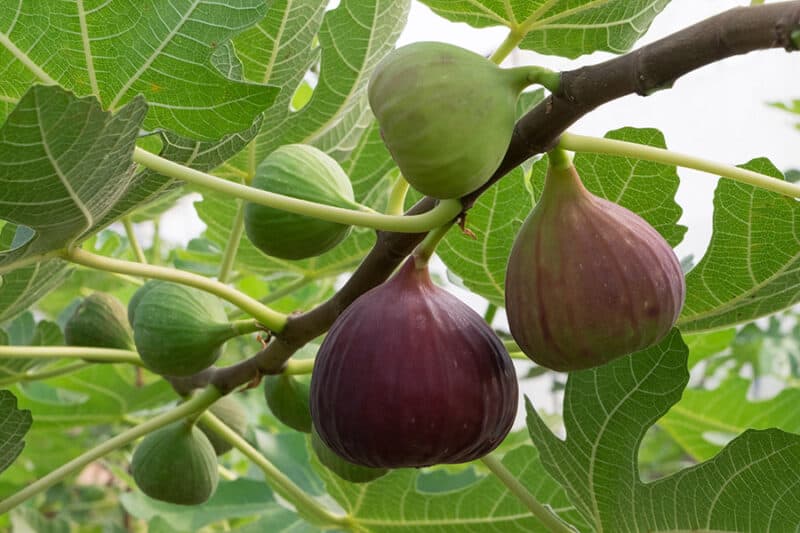
If you’re keen on growing plants that have the most calcium, be sure to grow some fig trees. These can thrive and even fruit indoors, and their dried fruit has 162 mg of calcium per 100 g. That’s a crazy amount of calcium for such small (sweet, and delicious) parcels.
37. Almonds
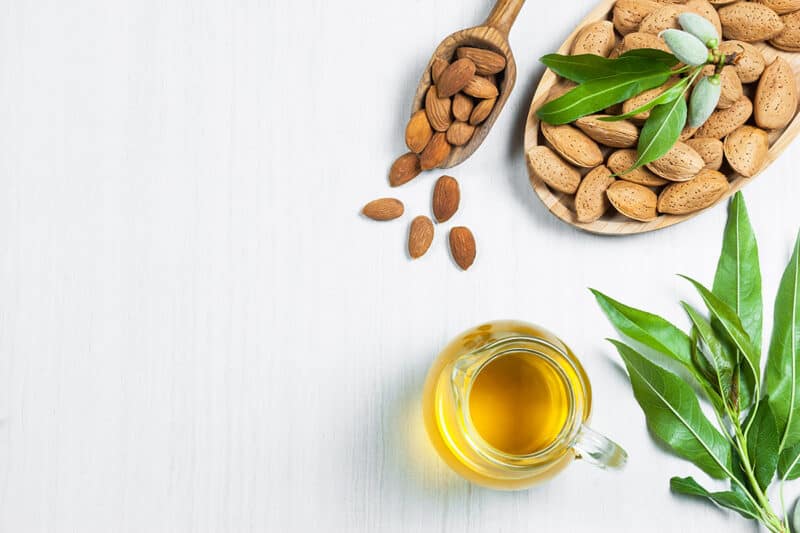
If you’re lucky enough to grow in a climate that can support almond trees, then please, please grow some. They thrive in hardiness zones 7 through 9, with long, hot summers and sunny, dry conditions. So yeah, if you live in California or a similar locale, definitely grow these for their nuts.
You’ll get 264 mg of calcium per 10 0mg serving of raw almonds. Isn’t that amazing? You can snack on them, transform them into drinks like almond milk or horchata, make almond butter… sigh.
Let us live vicariously through your warm growing zone.
38. Flax (for seeds)

In contrast to the aforementioned almonds, which require a very specific climate to thrive, flax can be grown pretty much everywhere. I have this stuff sown all over my zone 4b property, and I have friends who grow it in Sweden and New Zealand too.
Flax seeds contain 256 mg of calcium per 100 g serving, which is quite a bit considering their small size. Furthermore, they have high levels of omega-3 fatty acids. Win-win!
39. Quinoa
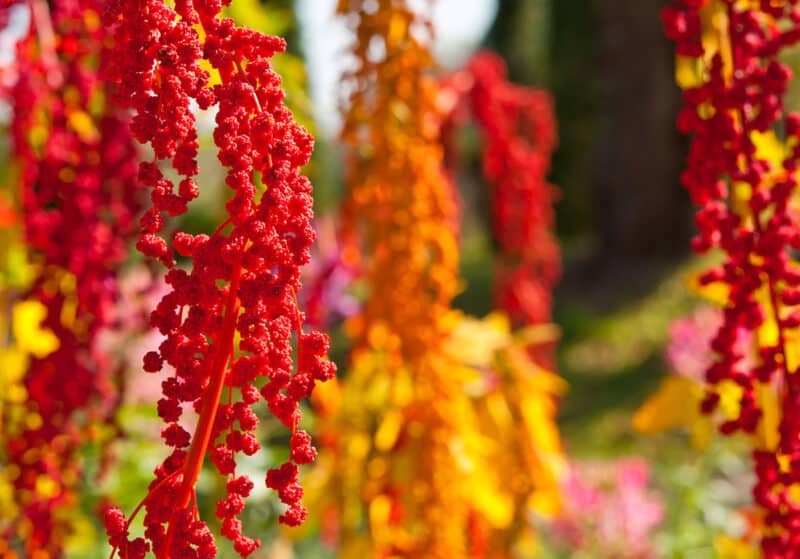
While quinoa has just under 18 mg of calcium per 100 g, it still deserves a special place on this list. Quite simply, it’s such a versatile plant, and its seed grains are so nutritious, that it’s a must-have on anyone’s homestead (as long as they’re in zones 4 and up).
This is also a great, calcium-rich proto-grain to grow if you adhere to a gluten-free diet. Dry its seeds out well and process them through a coffee grinder to make your own flour!
40. Amaranth
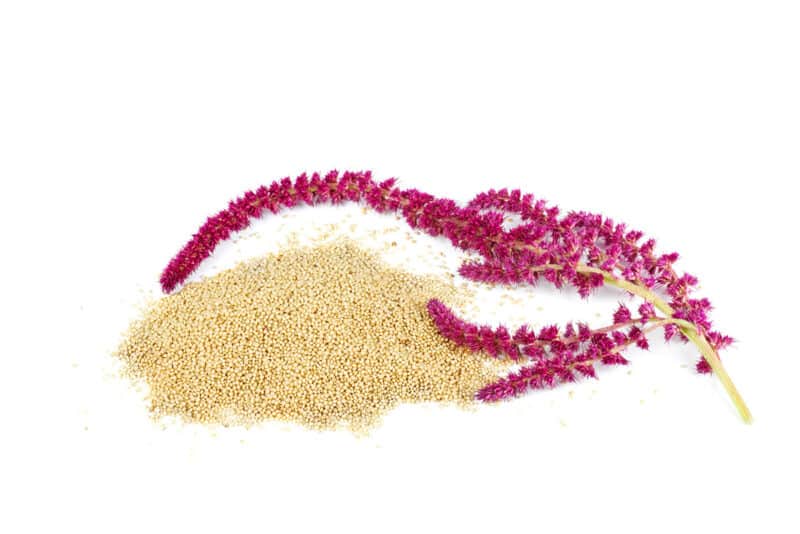
This fabulous plant can pull double duty as a calcium powerhouse. Its greens can be cooked and eaten like spinach, while its seeds are great stand-ins for quinoa or millet.
If you’re trying to add more calcium to your diet, keep in mind that vitamin D improves its absorption, while sodium and caffeine hinder it. Try not to eat calcium-rich foods alongside tea or coffee. Instead, take your kale-quinoa-almond bowl into the sunshine and nom on it out there.
As you can see, among all the plants that have the most calcium, there’s a flavor profile to suit every palate. If you don’t like okra, go for kale or radish greens, etc. You’re certain to find something on here to satisfy every member of your family, while also making sure they get plenty of calcium in their diets.
